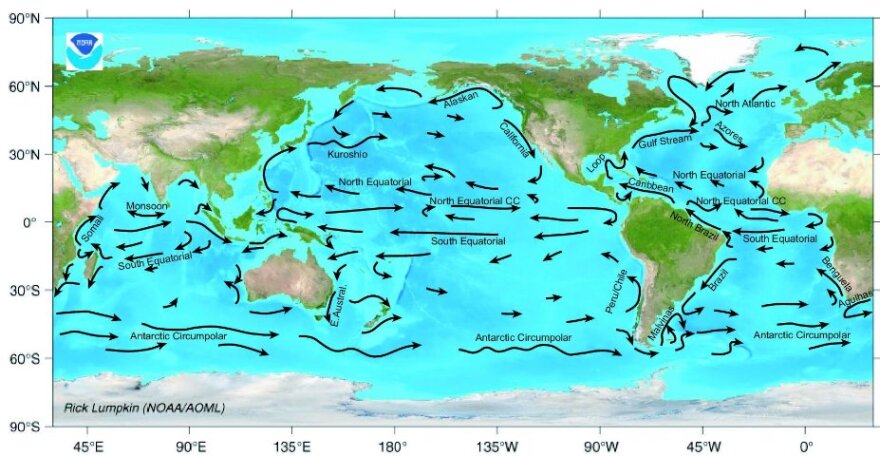With our free press under threat and federal funding for public media gone, your support matters more than ever. Help keep the LAist newsroom strong, become a monthly member or increase your support today.
Fukushima radiation helps researchers study ocean currents

It's been four years since an earthquake and tsunami combo caused a nuclear meltdown in Japan, resulting in a significant amount of radioactive material leaking into the Pacific Ocean.
Since then, the isotopes from the Fukushima plant have slowly travelled toward North America.
Scientists say none of the tainted water has washed up on West Coast shores yet, and when it does, they expect concentrations of nuclear material to be well below dangerous levels.
Still, as this material moves through the ocean, scientists have been tracking it to learn more about how ocean currents work.
Radioactive elements such as the cesium and iodine associated with Fukushima make for excellent tracers, said Ken Buesseler with the Woods Hole Oceanographic Institution.
That's because these materials first entered the ocean on a specific date and so their progress can be monitored from then on.
from
on Vimeo.
So far, these elements have shown that water from Asia travels more slowly to North America than many computer models predicted.
Buesseler also noted that the leading models had significantly different predictions for when the tainted material should reach North America.
This new data will help researchers tweak the models to better understand how material moves through the Pacific.
"We simply would want to know better... when a contaminant might show up from any source in the ocean," Buesseler said.
These isotopes could also help researchers better understand a phenomenon called upwelling. This occurs when surface water off shore mixes with deeper ocean water.
By tracing the isotopes as they go through this process researchers will be able to see how upwelling affects when distant water reaches the shore.
"There are some big questions we can address by looking at these relatively small amounts of Fukushima isotopes on our coastline," he said.
Studying isotopes in the ocean is not a new technique. Scientists used material released after nuclear weapons tests in the '50s and '60s to do early work on ocean currents.
Buesseler himself studied material released during the Chernobyl disaster of the 1980s to learn more about the water patters of the Black Sea.
Later this year he plans to travel from Hawaii to Alaska in a research vessel to sample water in hopes of learning more.
At LAist, we believe in journalism without censorship and the right of a free press to speak truth to those in power. Our hard-hitting watchdog reporting on local government, climate, and the ongoing housing and homelessness crisis is trustworthy, independent and freely accessible to everyone thanks to the support of readers like you.
But the game has changed: Congress voted to eliminate funding for public media across the country. Here at LAist that means a loss of $1.7 million in our budget every year. We want to assure you that despite growing threats to free press and free speech, LAist will remain a voice you know and trust. Speaking frankly, the amount of reader support we receive will help determine how strong of a newsroom we are going forward to cover the important news in our community.
We’re asking you to stand up for independent reporting that will not be silenced. With more individuals like you supporting this public service, we can continue to provide essential coverage for Southern Californians that you can’t find anywhere else. Become a monthly member today to help sustain this mission.
Thank you for your generous support and belief in the value of independent news.

-
The rock legend joins LAist for a lookback on his career — and the next chapter of his music.
-
Yes, it's controversial, but let me explain.
-
What do stairs have to do with California’s housing crisis? More than you might think, says this Culver City councilmember.
-
Doctors say administrator directives allow immigration agents to interfere in medical decisions and compromise medical care.
-
The Palisades Fire erupted on Jan. 7 and went on to kill 12 people and destroy more than 6,800 homes and buildings.
-
People moving to Los Angeles are regularly baffled by the region’s refrigerator-less apartments. They’ll soon be a thing of the past.







